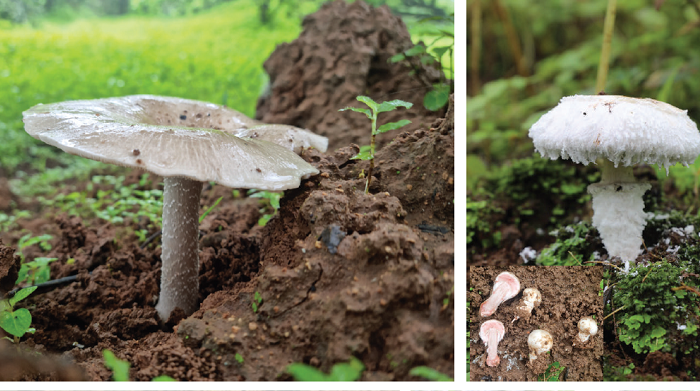
Muscat: The Ministry of Higher Education, Scientific Research and Innovation, represented by its Oman Animal and Plant Genetic Resources Center(Mawarid), announced today in a press conference the discovery of living organisms known for the first time in the world and others recorded for the first time in Oman and the Arabian Peninsula. This announcement coincides with the United Nations International Day for Biodiversity, which falls on May 22 of each year.
The discoveries were announced by Her Excellency Professor Dr. Rahma bint Ibrahim Al Mahrouqia, the Minister of Higher Education, Research and Innovation, and was attended by the research team that discovered the living organisms, a group of officials in the sectors of scientific research, investment and industry, and representatives of the local community, in addition to a group of school and university students. The event represented a celebration of the rich and unique biodiversity that characterizes the Sultanate of Oman.
Edible fungi and others with medicinal qualities
The discovery includes three types of mushroom known for the first time in the world, and ten other mushrooms recorded for the first time in Oman and the Arabian Peninsula. The fungi were collected from different areas of the Dhofar Governorate in the khareef season of 2022 and were characterized in laboratories using modern techniques that rely on the genetic sequence of these fungi in addition to phenotypic characterization, which used apparent characteristics seen with the naked eye and others that were documented using microscopes based on accurate scientific characterization of large fungi. The identification results, names of the fungi, and information related to them were recently published in two peer-reviewed scientific journals.
The most prominent fungus that was discovered is edible and is harvested in the fall season in the Omani Governorate of Dhofar. It is locally called “Qumba” (Photo A). It is the most popular mushroom among citizens in the governorate, as the research team agreed to give it the scientific name Termitomycesdhofarensis. It is the second mushroom to bear the name Dhofar, where the name was given to another fungus that the team also described in the year 2022.
The second discovered mushroom was named Hymenagaricuswadijarzeezicus (Photo B), which is a name inspired by the location where it was found in Wadi Jarzeez in the Dhofar Governorate. While the third mushroom (Photo C) was given a Latin name derived from its external shape, Hymenagaricusparvulus. Ten of the fungi that have been identified are recorded for the first time in the Sultanate of Oman and the Arabian Peninsula (photos 1 to 10), and some of them are known to have medicinal properties.
The properties of the fungi discovered for the first time are not yet closely known, as the research team is currently conducting multiple studies of the nutritional and medicinal properties of these fungi and has had initial positive results. Work has already begun to study the possibility of cultivating some of these fungi to become available for large scale consumption, but these experiments have just started and it is difficult to predict the feasibility of cultivation because the properties of the discovered fungi, the environments and the factors they need to grow in laboratory conditions are not known yet, and therefore any positive results will require some time.
A continuous journey of discoveries as a result of fruitful national cooperation
The recent discoveries came as a result of fruitful research cooperation since 2018 between several governmental and private agencies. It is also an addition to previous discoveries documented in the years 2022 and 2023 of five mushroom species that are also known for the first time in the world. The Oman Animal and Plant Genetic Resources Center (Mawarid) is implementing this phase of the wild mushroom project in the Sultanate of Oman in cooperation with the College of Agricultural and Marine Sciences at Sultan Qaboos University and Dhofar University, with funding from the Agricultural and Fisheries Development Fund. Within the research cooperation between all these bodies, diverse and integrated expertise is provided, in addition to the integration of research and laboratory capabilities. In addition, the research team sent two of the project's researchers to Belgium to receive training in the field of mushroom that serves the project's objectives. The team hosted more than one international expert for the purposes of enriching research and training work.
Local community participation and the importance of traditional knowledge to support scientific research and discovery
The project's research team has a close and fruitful relationship with local communities in Dhofar Governorate. A group of interested citizens from the governorate, in addition to members of a hiking and adventure enthusiasts team , played a fundamental role in the achievement. Traditional knowledge of the locations and uses of fungi plays a supportive and inspiring role for the research team. In return, the research team shared with the local community its knowledge of the classification of many mushroom and sometimes some uses for certain species, and held a workshop in Dhofar Governorate for those interested in these fungi.